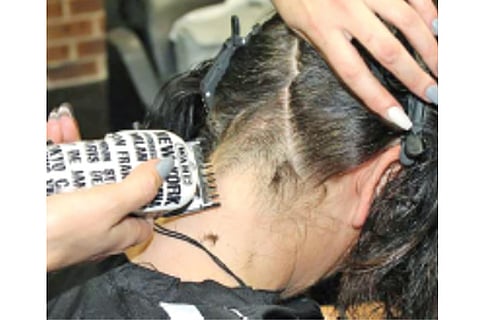

Chennai
One of the sorry stories of reconciliation for an immigrant is the visit to a barber shop in the US. It is natural for many to think that I have started grumbling about the cost of haircut. But they are so wrong because there are many interesting dimensions in this chapter that need to be told.
One cannot find the magical fingers of the Indian barber and his refreshing scalp massages, the cool style of the water spray and the brilliant shapes that can be worked with the fragile Indian hair. A pair of scissors to match the individual facial profile is certainly not the norm in the sophisticated chain salons that do only the archetypal haircuts.
Standardisation is the key word for haircuts, too. When the people here visit their regular salons, the staff at the counter, or the stylist herself/himself, types in the name and the past record pops up: number 2 on the side, 4 on top and 2 at the back – the job is done. These numbers decide how we look. Do I have no option to change the style? Sure, but I should be able to express my desire as numbers for the clipper.
“How I used to trust my hair stylist in India! His passion to make me look at my best was what I admired. Every time I went to his shop, he looked at me – like he does for each of his customers – with special eyes and will always suggest ‘Sir I will give you a new style, you will look great in it’. He will be right most of the time,” feels Samuel Raj from Virginia.
But such experimentations are virtually impossible here. The stylists would not venture into giving suggestions even if he knows that customer’s choice is going to make him look crazy. Blame it on the individual liberty laws that can even attract legal suits if violated.
“Even after a disappointing haircut, I do not have the luxury of asking my hair stylist why didn’t he advise me. Because he is going to say, ‘It is just what you asked for Mr Shah’. He may go to his system and read the numbers to confirm,” vents out Ranvir Shah, an IT professional who recently moved to the US.
Another major problem for many is hair fall. In the first five years of immigration, most people complain of enormous hair fall. This could be due to the water, weather or natural cause like ageing. Whatever the reason maybe, it is hard to expect the professionals at the salons to suggest an appropriate style. It’s the men whose style profile is worse off, while it is not that bad for the
women. But if you are parent who is found coercing your child for a particular style at the salon, your stylist may even call 911 to mediate!
The orthodox Indian men who believe that profession is not for women may be left with little choice but to trust those professionally trained female stylists at the salon. In the corporatised salons, female stylists outnumber their male counterparts. Cost? Why ask! For an immigrant who just settled in the US, it is a big budget affair. The average price of the haircut, along with the tip, is around USD 20. In rupee terms, this would be as much as some of the upmarket salons in India charge. But here in the US, this is the amount one would spend for a 20-pound bag of rice which would last a month for a family of two. Economic pundits know that the alternate use dictum of money value justifies the sigh.
But for many young couples whose visa scares and tight project schedules don’t permit them to visit India with their new born child, these salons become the holy shrines. They save the hair
shaved by the US barbers and take it back as offering to temples when they manage a trip back home.
It is for this reason that the Indian parlours are the best bet for immigrants from India. It is not the price that matter, but the style that they can trust. It must, however, be noted that the people who set up salons are not always professional barbers, but those who take to this profession due to situational demands. The natural vibe of the profession is often missing.
“My hairstylist doesn’t like to hear me say ‘please use the scissors to give a nice shape’,” complains Ranga Sethuraman from New Jersey. While this is true in corporatised chains where clippers are the preferred tool, there still are family owned specialty barbershops that provide respite using scissors. But they are less in number and expensive. Many of the hairstylists employed in the chain stores actually do it as their second job to supplement their income. For them, the clippers are an easy tool to earn that little extra.
Many do warn me saying that India, too, is moving to corporatised facilities that are dominating the cities. That the talented barbers are becoming an extinct breed. The traditional stylists that we used to have, who were backed by generations of experience, are becoming rare to find everywhere. It really is a thing of concern. After all, they played a vital role in boosting confidence with those enhanced, sophisticated looks to show up for visa photographs, landing these immigrants in their dream destinations. Many salutes to the salons back home!
— The writer is a journalist based in New York
Visit news.dtnext.in to explore our interactive epaper!
Download the DT Next app for more exciting features!
Click here for iOS
Click here for Android